Tangerine Dream Platinum SHM-CD Reviews
I own more albums by Tangerine Dream than I do any other artist, although that speaks more to their insane output than anything else. Excluding their numerous (and typically fantastic) soundtracks, the Tangerine Dream albums that I treasure the most are their first four for Virgin Records: Phaedra, Rubycon, Ricochet and Stratosfear. It was with these records that the band moved away from their ultra-experimental krautrock beginnings and into a much more electronic/ambient space that saw them through most of their career.
Now, these four albums have been re-released in Japan as “high resolution” formats; SHM-CD, Platinum SHM-CD and SHM-SACD.
And I realize that most of your eyes have probably just glossed over so I should probably go over those really quick.
- SHM-CD stands for “Super High Material CD,” and use a different polycarbonate material that supposedly results in higher sound quality with reading errors.
- Platinum SHM-CDs are the same, but instead of using a standard aluminium coating they use platinum. This also supposedly boosts audio quality.
- SHM-SACD are Super Audio CDs, an entirely different audio format that is not compatible with standard CD players. These discs can hold more information and playback surround sound audio. They also supposedly sound better than traditional CDs.
Notice that I’m saying “supposedly” a lot. That’s because most of this is audiophile snake oil bullshit. SHM-CDs have never been known to sound notably better than traditional discs, and while I don’t know much about their platinum variants, I can’t imagine the change in coating makes that much of a difference. SACDs have their own benefits of course, the added storage space and surround sound capabilities are nice bonuses, but I’ve never been able to hear the difference between an SACD and a regular disc, a view that science backs me up on.
But I still bought the platinum SHM-CDs for these four titles. Why? Because while the science behind “SHM” is mostly balderdash, SHM-CDs can often sound better than their regular CD or digital counterparts. This is because they frequently use different masters that place more of an emphasis on dynamic range and preserving the feel of the original recording, and not on mucking with the source material or making them as loud as possible.
I also wanted an excuse to write about Tangerine Dream.
Phaedra (1974)

Tangerine Dream released four albums before Phaedra; Electronic Meditation, Alpha Centauri, Zeit and Atem. I can’t listen to any of them. While I respect what they’re doing with them, experimenting in a lot of interesting ways with the then-new technology of analog synthesizers, they just really don’t work as music for me. They seem more like recordings made for themselves than proper albums intended for others.
Phraedra was the first album that seemed to turn this around. Widely casting aside the acoustic elements found in some of their previous records, most of the album’s sound consists of ethereal synthesized effects, featuring the occasional flute, guitar or organ accompaniment. The obvious album highlight is the 17-minute title track, an opus that dips back-and-forth between meditative ambient soundscape and the urgent, sequencer-based sound that would become the band’s trademark in the years after. The epic sound of “Mysterious Semblance at the Strand of Nightmares” is also classic, and invokes an epic sound that directors like Michael Mann were no doubt looking for when recruiting Tangerine Dream for film scores.
Rubycon (1975)
Rubycon is 34 minutes long, and consists of one self-titled track split into two parts. It relies slightly more on traditional instruments than the group’s previous release (lots of gongs here) but it’s still largely an electronic affair heavy with synthesizers.
As it is just one long track, it takes its time to get going. The first eight minutes or so are largely ambient before the sequencers really start to kick in. But once they do things really amp up to a frantic pace. Echoes of Pink Floyd’s “Echoes” can no doubt be heard in the tail end of the first part, with the occasional guitar riff and the distorted audio effects giving the entire thing a very dark and somewhat menacing vibe. The sense of dread morphs into an overwhelming feeling of unease with the opening of part two, which begins with what sounds like a highly distorted air raid siren while ghostly howls howl in the periphery. These howls eventually move the forefront, creating a sound that can only be described as choral music from hell. When the sequenced sounds return it’s almost a relief.
Creepy, and not entirely cohesive. But what it lacks in structure it makes up for in scope.
Ricochet (1975)
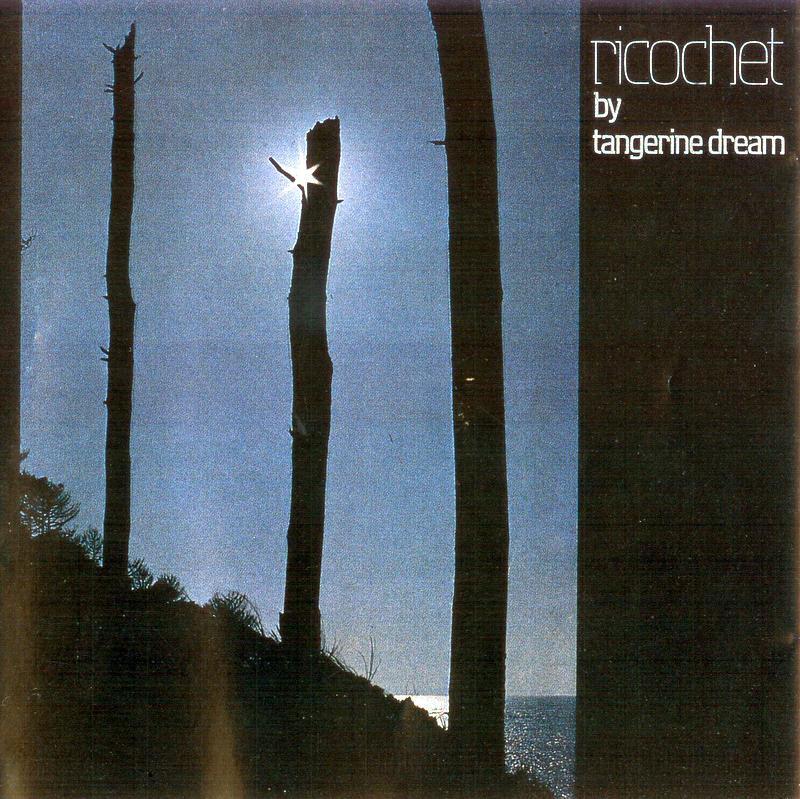
Tangerine Dream’s first live album, comprised of a variety of recordings taken during the 1975 European tour. Like Rubycon before it, the album consists of a single title track split in half. Unlike Rubycon, this is an excessively fun record. Upbeat and incredibly energetic, a real attempt by the band to take their sound and tailor it for a live performance that wouldn’t put people to sleep. Uptempo without ever being exhausting, this is my go to background music for writing, although I will admit there’s not much to it though when compared to their more complex and layered studio recordings.
Stratosfear (1976)

A fucking masterpiece of the highest order. On Stratosfear, Tangerine Dream took everything they did before and added even more layers to it. Guitars and other traditional instruments are more heavily showcased, but only as background to the main synthesized setpieces.
Sadly, this was the last album to feature the classic Froese/Franke/Baurmann line-up the group, and while I still they put out plenty of great music in the following decades, they would never top this record. If you only buy one Tangerine Dream album, make sure it’s this one. It’s not even a contest. The title track remains my all-time favorite Tangerine Dream song, the chord just sends chills up my spine every time I hear it. Classic.
Audio Quality
For the purposes of this review I ripped the SHM discs as lossless audio.
As I said before, these re-releases are available on three different formats, SHM-CD, Platinum SHM-CD and SHM-SACD. As I don’t have an SACD player, I opted for the platinum option. I really don’t know if they’re any better or worse than the regular SHM-CDs, but as I don’t plan on making these audiophile-grade purchases a regular thing, I thought I’d go all out.
To my rather humble ears, I think each of these discs sound absolutely astounding. I was first exposed to Tangerine Dream on vinyl – and these discs really blow those old LPs out of the water. Of course, that’s not really saying all that much – with their emphasis on quiet sections and high dynamic range, Tangerine Dream is not a band who is best experienced on vinyl. Nearly all of my Tangerine Dream LPs are too noisy for me to really appreciate the music.
But do these new releases really sound that much better than previous CD versions? I thought I’d compare. First with Phaedra, which I own two previous copies of – one taken from The Virgin Years box set, and another as a download that came with the recent Back To Black vinyl re-issue.
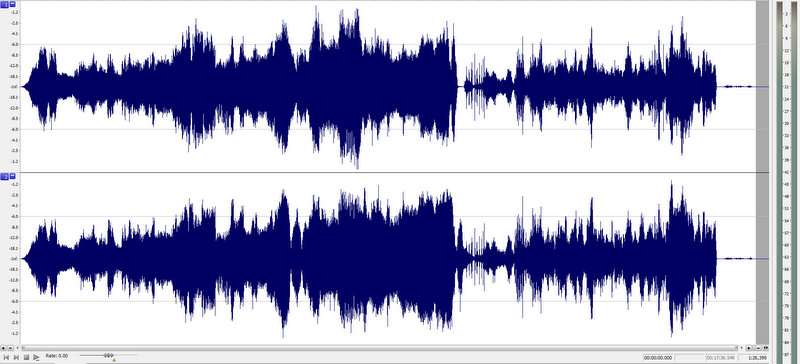
“Phaedra” Virgin Years Box Set
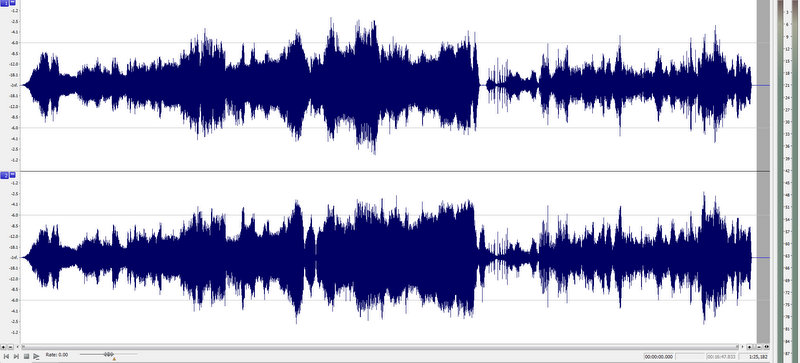
“Phaedra” Back To Back MP3 Download
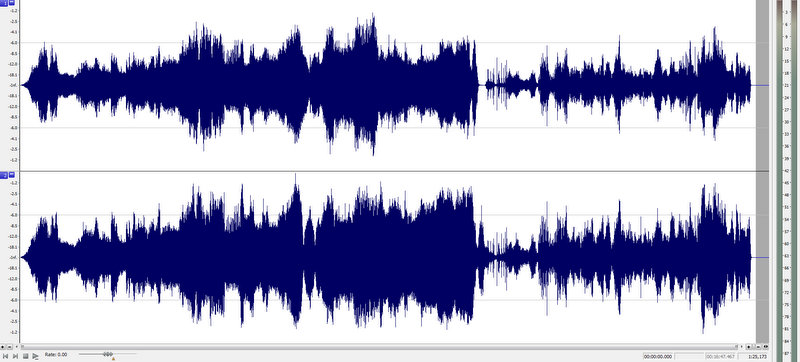
“Phaedra” Platinum SHM-CD
As you can probably tell, the most obvious difference between the three is that the Virgin Years version is considerably longer. That’s not a good thing though, that’s actually an error with the CD with track two mistakenly starting on track one. Both the Back To Black and SHM masters fix that problem. Aside from that one major mistake though, all three versions sound pretty much identical. The SHM edition is actually slightly louder, but the dynamic range still appears to be intact so that’s not an issue.
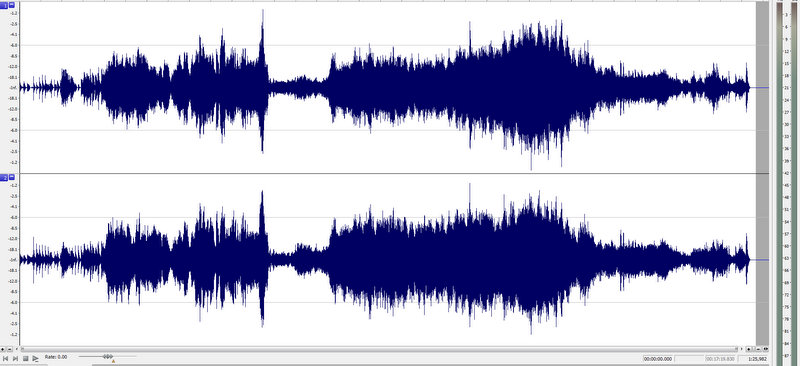
“Rubycon Part 1” Virgin Years Box Set
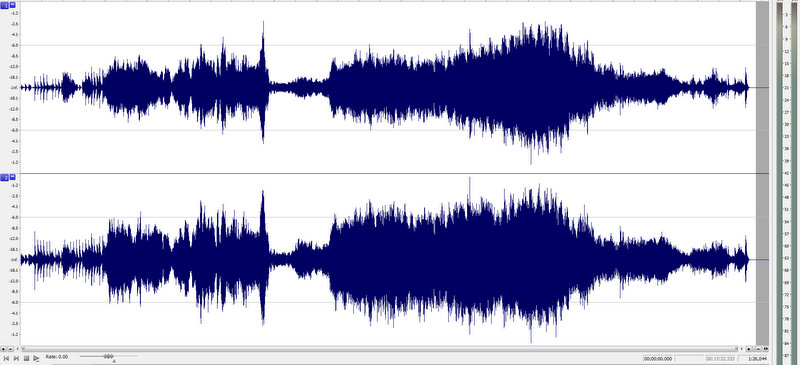
“Rubycon Part 1” Platinum SHM-CD
Rubycon has some slight volume differences. The left channel seems to have been made a bit quieter, and the right amped up slightly. This is strange, but not really noticeable or bothersome. Both versions sound just fine.
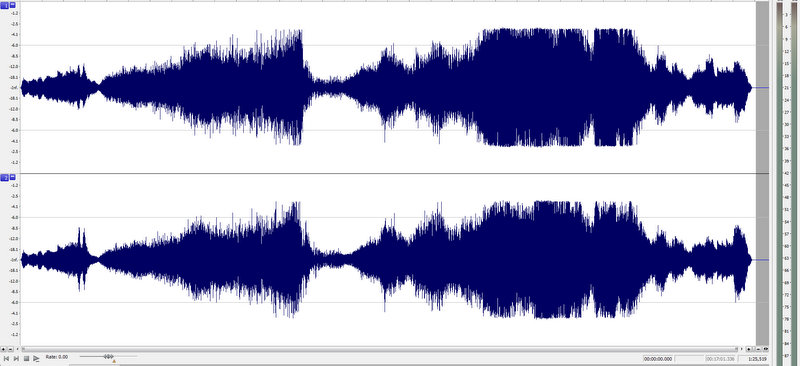
“Ricochet Part 1” Virgin Years Box Set
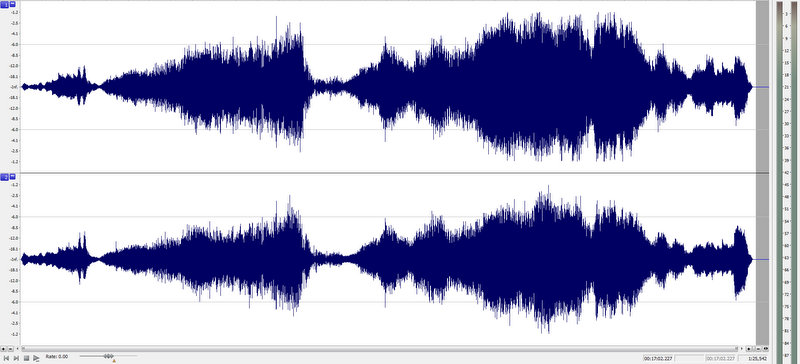
“Ricochet Part 1” Platinum SHM-CD
Big difference on Ricochet though! For whatever reasons someone decided to clip the Virgin box set version. Not that big a deal, but still pointless. The new SHM-CD doesn’t have this problem and when I compared the most clipped section back-to-back I actually did notice a difference. Of the four CDs, this is the one that’s the most different.
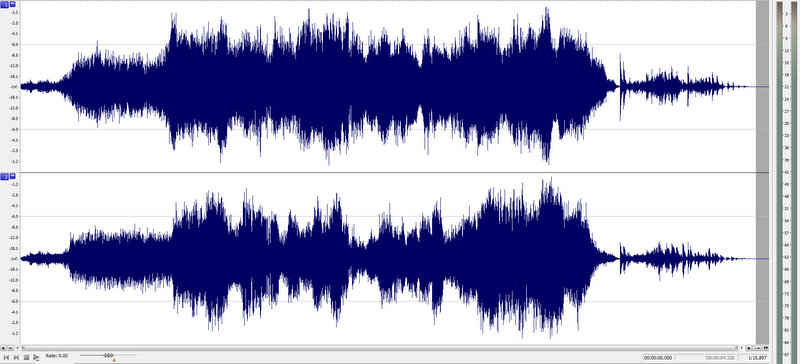
“Stratosfear” Virgin Years Box Set
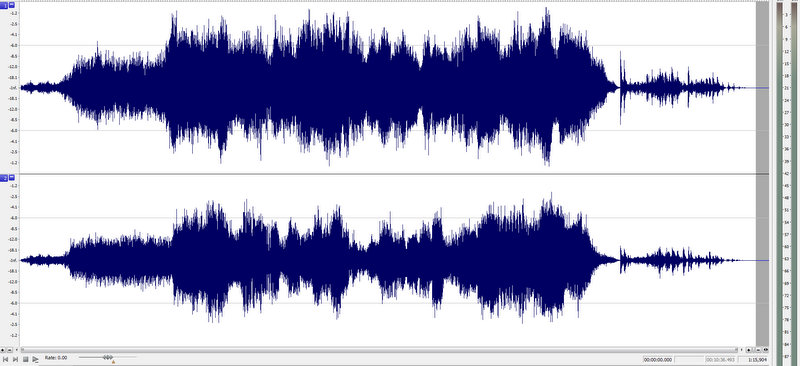
“Stratosfear” Platinum SHM-CD
Stratosfear had the least amount of differences between the Virgin Years box set and the new SHM-CD. Just some minor tweaks and volume changes. I couldn’t hear a difference with this one at all.
Packaging

The inclusion of the original OBIs is a nice touch.
Each CD comes in a replica mini-LP sleeve that reproduces the original LP packaging right down to the authentic OBI strips. Each also come included with Japanese liner notes and plastic pockets to protect the CDs from getting scratched. Each the CDs are the same bluish-green, highly reflective color, which I think is a standard trait of SHM discs. It would have been nice to have some original label art here, but it doesn’t really matter all that much.

Original gatefold and liner notes are included as well.
I’m a sucker for Japanese mini-LP sleeves, so I think these look gorgeous. I love that they include copies of the original OBIs, and I’m equally impressed with the sleek high-gloss varnish that coats each of them. And as someone who is practicing his katana, the inclusion of Japanese liner notes is a nice touch. I now never have to wonder how to spell Stratosfear in Japanese. (It’s ストラトスイア in case you were wondering.)

Final Verdict
So,do you need to buy these?
No. No you do not.
If you like Tangerine Dream at all then you probably already own these albums – and from what I’ve read on the Internet most of the recent masters of these albums are just fine. Sure, if you have a 1980s CD of Phaedra then you could probably stand to upgrade, but you don’t need to spend the $40-$50 these CDs would cost you to import in, just get a regular CD of it.
These are fantastic, wonderfully original albums though. So if you’ve never listened to them before, do yourself a favor and pick them up in one form or another. Nothing sounds quite like them.


Leave a Reply to sszorin Cancel reply